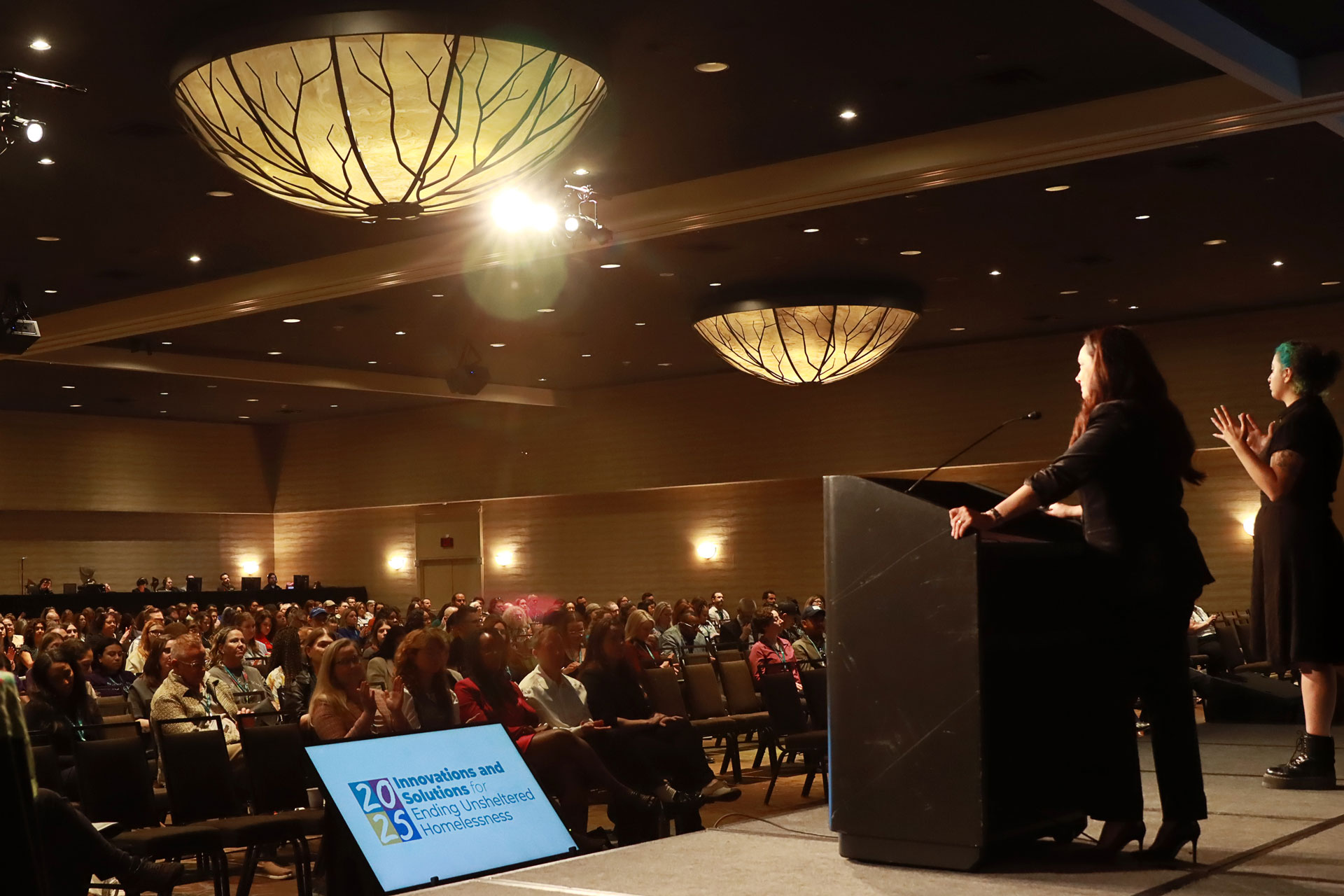The number of people enduring unsheltered homelessness rose in most communities across the country last year. Homelessness response systems are working diligently to rehouse people but they face an uphill climb due to increasing levels of inflow and inadequate resources to address the problem.
In spring 2023, the federal government awarded 32 communities across the country with additional resources to address unsheltered homelessness. Before they began implementing their grants, the Alliance asked 24 representatives of the funded communities about the factors that had been preventing progress on unsheltered homelessness.
For people who work in this field, none of the barriers they named are likely to be surprising. Communities of varying sizes, locations, and geographies face similar underlying challenges. This means that a broad spectrum of communities are likely to benefit from the lessons and insights offered by these grantees; understanding the challenges they faced, and how they chose to act, can help illuminate appropriate action from policymakers and elected officials in other jurisdictions too.
Here’s what they had to say.
No community has enough affordable housing or housing assistance programs to meet the need.
Staff in all 24 jurisdictions cited the lack of affordable and permanent housing as a crucial barrier to tackling unsheltered homelessness. Homelessness response systems are challenged by the housing landscape on several fronts:
- Units affordable to low-income people and people on fixed incomes arefew and far between – and financial assistance to help people make rent even more so.
- The high up-front cost and long timelines of building new housing mean that this is not a quick fix, and working with the private rental market creates its own challenges.
- Meanwhile, increasingly unaffordable housing pushes more and more people into homelessness. As one person in a rural jurisdiction said: “Every time we get one or two households housed, we see five more become homeless. We just can’t keep up.”
Homelessness response systems are stretched thin.
Another near-universal concern is staff capacity. The homeless services workforce is overburdened and underpaid. A quarter of interviewed communities named compensation policies specifically, with more than one asserting their workers couldn’t afford to live in the same place they worked. One particular capacity need includes a lack of clinicians who could work with people with high mental health and substance use needs. Some noticed burnout on a systems level, too: organizations are just trying to maintain operations, but feel they are no longer able to look for new funding opportunities or ways to expand their services to more people.
People who are unsheltered need clear pathways to access homeless services.
Street outreach coverage was a barrier among two-thirds of interviewees, although many noted recent steps to address this challenge. While nearly all had at least some street outreach, it didn’t always cover the full jurisdiction or work with all populations (teams might only be funded, for example, to work with veterans or young people). Because funding is often piecemeal, outreach is not always standardized or coordinated across providers (unlike permanent housing interventions, which have common referral pathways and are monitored according to certain program standards). Even if providers might want to collaborate for the good of the people they work with, this is challenging without resources to support it.
Some places are more challenged by shelter capacity than others.
About half of communities named specific deficiencies in their emergency shelter systems that got in the way of progress. Some rural areas, for example, may not have any shelter available for miles. While service providers have taken steps in recent years to make shelters more accommodating (such as allowing households to come in together, including pets), this is still a challenge and contributes to people staying outdoors in some places. But, even as staff would name insufficient shelter as a problem, many brought the conversation back to the underlying issue of housing: without permanent options for people, no number of interim solutions will get to the root of the problem.
Policy and politics can get in the way of solutions that work.
As unsheltered homelessness has received more attention, it has increasingly been seen through a political lens by some elected officials. Many have embraced harmful “solutions.” However, communities noted that encampment raids are extremely damaging to the wellbeing of unsheltered people, and they ultimately reduce the chances that people will be housed. They also noted that raids disrupt the work of the homelessness response system.
Communities noted additional challenges related to politics and policy. Among the factors that complicated their work were:
- difficulty navigating changing political winds that can affect funding,
- jurisdictional tensions over responsibility and differing approaches to the issue, and
- the varied and substantial administrative requirements related to different funding sources.
What are communities doing to tackle these challenges?
With the new funding, communities had the flexibility to select strategies that fit their local needs and capacity. They chose to scale up programs that work, investing heavily in permanent housing. They also found ways to enhance existing interventions, like street outreach and housing navigation, and to innovate, like new partnerships with healthcare entities.
The Alliance’s Homelessness Research Institute recently published an analysis that provides important insights about their planned efforts. The Alliance will continue to collect and share lessons learned with the field as they progress their work.
Stay Updated: Solutions, Stories, and Ways to Make an Impact
Sign up to receive updates on the Alliance’s work, including the latest research, advocacy efforts, and real stories of progress — plus ways you can help drive lasting change.














